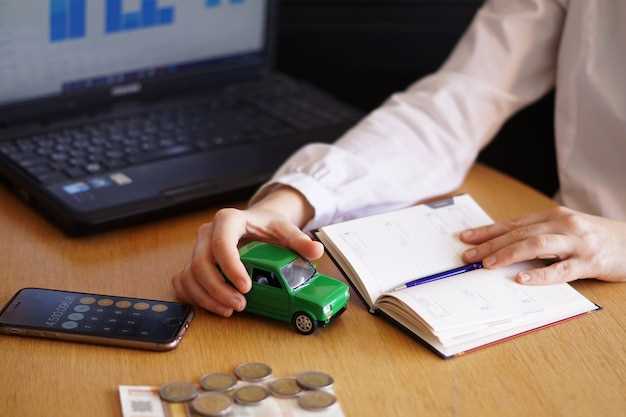
The automotive market is continuously evolving, and the demand for historic vehicles has seen a notable increase over the years. Forecasting the future value of these classic cars has become a crucial aspect for collectors, investors, and enthusiasts alike. Experts in the field utilize various methodologies and historical data to predict how the value of these vehicles might appreciate over time.
Factors such as rarity, condition, provenance, and market trends play pivotal roles in determining the appreciation potential of historic vehicles. By analyzing past sales data and current market dynamics, specialists can provide valuable insights into which models are likely to yield substantial returns in the long run. This predictive analysis not only helps collectors make informed decisions but also supports the preservation of automotive history.
As the classic car market continues to gain traction, understanding the nuances behind the forecasting of future values is increasingly important. Therefore, we delve into the expertise and methodologies employed by professionals to provide a comprehensive overview of how historic vehicles can be valued for their future potential.
Analysis of Market Trends for Classic Cars

The classic car market has seen significant fluctuations over the years, influenced by various factors such as economic conditions, collector interests, and technological advancements. Understanding these trends is essential for experts looking to forecast the future value of historic vehicles.
Several key trends have emerged within the classic car market:
- Increased Demand: The appeal of classic cars continues to grow, with a rising number of enthusiasts seeking to own iconic models. This increased demand often drives up prices, making certain vehicles more desirable.
- Investment Potential: Classic cars are increasingly viewed as alternative investments. Collectors are looking for cars that not only provide enjoyment but also have the potential for appreciation in value over time.
- Influence of Online Auctions: The digital transformation of the automotive market has led to the rise of online auction platforms. These platforms have widened the reach for buyers and sellers, impacting sales prices and market accessibility.
- Restoration and Preservation: The trend towards restoration and preservation of classic cars is significant. Many collectors are opting to restore vintage models rather than modify them, thereby maintaining their historical integrity and potential value.
- Shift towards Electric Vehicles: As the automotive industry moves towards sustainability, there is a growing interest in converting classic cars to electric power. This shift may affect the market, creating new segments that combine classic aesthetics with modern technology.
Forecasting future values of classic cars entails examining these trends closely. Experts often utilize data analytics to assess how these factors may evolve, including:
- Economic Indicators: Monitoring macroeconomic trends can provide insights into disposable income levels and consumer confidence, which are crucial for predicting market activity.
- Demographic Shifts: Understanding the age and interests of potential buyers assists in forecasting demand. Younger generations are increasingly becoming interested in classic cars, which could influence market dynamics.
- Historical Performance: Analyzing past sales data of similar models helps identify patterns and projected future values, allowing for informed predictions.
In conclusion, the classic car market presents unique opportunities and challenges. By staying informed on market trends and analyzing data effectively, experts can make accurate forecasts regarding the future value of historic vehicles.
Factors Influencing Appreciation Rates in Vintage Vehicles
The appreciation rates of vintage vehicles are influenced by several critical factors that collectors and investors must consider when forecasting future values. Understanding these elements can provide valuable insights into market trends and potential returns.
One of the primary factors is the vehicle’s rarity and production numbers. Limited production models or those with unique features tend to appreciate faster as demand increases and supply remains constrained. A well-documented history enhancing a car’s provenance can also drive demand, leading to increases in its value over time.
Condition plays a significant role in appreciation as well. Vehicles that are well-preserved or restored to high standards are more desirable to collectors. The quality of restoration work, including adherence to original specifications and use of authentic parts, can significantly influence a vehicle’s market position.
Market demand is another critical aspect. Trends in the collector market, such as rising interest in certain brands or types of vehicles, can lead to higher appreciation rates. Economic factors, including disposable income levels and consumer preferences, also impact demand fluctuations in the vintage vehicle market.
The cultural significance of a vehicle can enhance its appreciation potential. Cars associated with major historical events, renowned personalities, or iconic designs often see increased interest and value over time. The emotional connection buyers have with these vehicles contributes to their desirability and, consequently, their appreciation rates.
Technological advancements in restoration and preservation have also affected appreciation rates. Improved techniques and materials allow restorers to maintain vehicles in better condition, which can preserve or even enhance their value in the eyes of potential buyers.
Lastly, the broader economic climate influences appreciation. During periods of economic growth, vintage vehicles may appreciate more rapidly as collectors feel financially secure. Conversely, economic downturns can lead to stagnant or declining values. Understanding these economic indicators can help investors make informed forecasts about the future appreciation of vintage vehicles.
Methods Used by Experts for Value Forecasting

Experts employ various methods to forecast the future value of classic vehicles, integrating both quantitative and qualitative analysis to create comprehensive assessments. Each approach considers numerous factors that influence market trends and buyer interest.
Market Trends Analysis is one of the primary methods. This involves evaluating historical sales data, auction results, and demand fluctuations over time. By analyzing previous sales, experts can identify patterns that may indicate how specific models or brands are likely to perform in the future.
Comparative Valuation is another common technique. Experts compare similar classic vehicles based on attributes such as condition, rarity, and provenance. By establishing a baseline value from comparable sales, they can make informed predictions about a vehicle’s future worth.
Expert Appraisals, often conducted by seasoned professionals, offer insights that go beyond mere numbers. These appraisals consider the vehicle’s historical significance, unique features, and overall desirability, providing a more nuanced forecast that takes into account buyer psychology and market sentiment.
Economic Indicators play a crucial role in value forecasting. Factors such as inflation rates, disposable income trends, and shifts in consumer preferences can significantly impact the classic vehicle market. Experts regularly monitor these indicators to adjust their forecasts accordingly.
Networking and Industry Insights also contribute to accurate predictions. Experts often engage with collectors, dealers, and auction houses to gather firsthand insights that may not be apparent through data alone. Such relationships can uncover emerging trends and anticipated shifts in the market.
Finally, Technological Developments influence the classic vehicle sector. The rise of online marketplaces and changing buyer demographics alter how classic cars are bought and sold. Understanding these technological advancements allows experts to refine their value forecasts based on current and future market dynamics.
In summary, employing a combination of market trends analysis, comparative valuation, expert appraisals, economic indicators, industry insights, and technological developments equips professionals with the tools necessary to produce reliable forecasts for the future value of classic vehicles.




